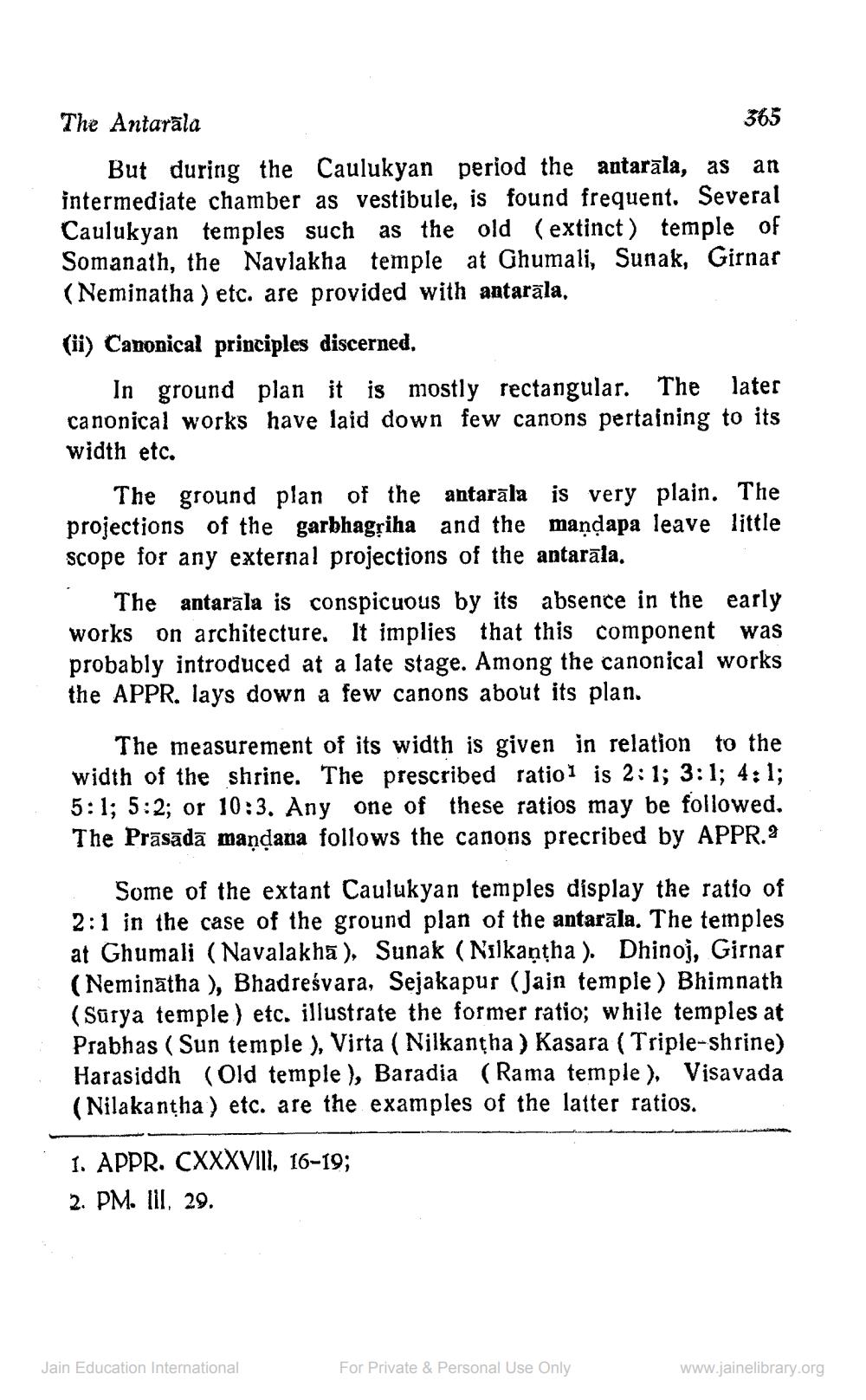________________
The Antarāla
365
But during the Caulukyan period the antarala, as an intermediate chamber as vestibule, is found frequent. Several Caulukyan temples such as the old (extinct) temple of Somanath, the Navlakha temple at Ghumali, Sunak, Girnar (Neminatha ) etc. are provided with antarāla,
(ii) Canonical principles discerned.
In ground plan it is mostly rectangular. The later canonical works have laid down few canons pertaining to its width etc.
The ground plan of the antarāla is very plain. The projections of the garbhagriha and the mandapa leave little scope for any external projections of the antarāla.
The antarala is conspicuous by its absence in the early works on architecture. It implies that this component was probably introduced at a late stage. Among the canonical works the APPR, lays down a few canons about its plan.
The measurement of its width is given in relation to the width of the shrine. The prescribed ratio1 is 2: 1; 3:1; 4: 1; 5:1; 5:2; or 10:3. Any one of these ratios may be followed. The Prāsādā maņdana follows the canons precribed by APPR.2
Some of the extant Caulukyan temples display the ratio of 2:1 in the case of the ground plan of the antarāla. The temples at Ghumali (Navalakha), Sunak (Nilkantha). Dhinoj, Girnar (Neminātha ), Bhadreśvara, Sejakapur (Jajn temple) Bhimnath (Sürya temple ) etc. illustrate the former ratio; while temples at Prabhas (Sun temple ), Virta ( Nilkantha) Kasara (Triple-shrine) Harasiddh (Old temple ), Baradia (Rama temple ), Visavada (Nilakantha) etc. are the examples of the latter ratios.
1. APPR. CXXXVIII, 16-19; 2. PM. III, 29.
Jain Education International
For Private & Personal Use Only
www.jainelibrary.org




